Lodi Apple Tree Grow & Care Guide
Written by Iris
Sep 14 2021
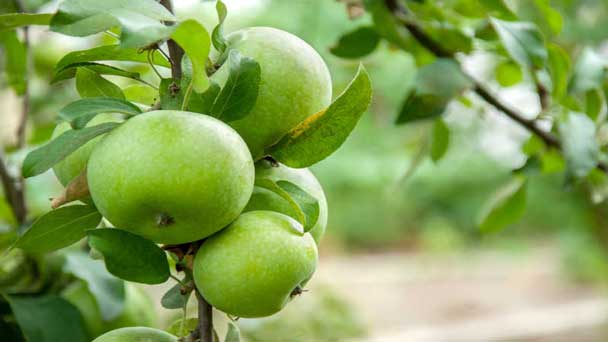
Lodi Apple Trees produce full and fragrant early maturing fruit that can be easily grown in your own garden. Lodi Apple Tree is a medium sized tree, growing to 20 feet tall and 25 feet wide. There is also a dwarf garden that is only 15 feet high. Lodi Apple Tree, while delicious, don't last long. However, they can be sliced and frozen to extend harvest time. Their soft, creamy flesh is perfect for making apple cakes and sauces.
Apple trees need rich, well-drained soil. Adding compost to your soil will help promote growth and fruit production. you must be sure that your tree will be allowed good drainage and avoid planting it in a low spot. If the tree's roots sit in water, the tree will die. If you are planting your tree in an existing lawn, it is recommended that you remove the grass in a four-foot diameter prior to planting. Do not add fertilizer before planting your trees, however, as it can actually harm the tender young roots.
By the end of the 75 days, your seeds should be beginning to sprout. In 4-inch deep pots spread a soil mix. Then, make divots in the soil that are 1-2 times the size of the seeds. Add the seeds to the soil and gently cover them. Water until the soil is moist.
Place the pots somewhere where they will get sunlight. Water them frequently, keeping the soil moist. When the plants outgrow their pots you can either move them to bigger pots, and wait for them to outgrow those, or plant them in your desired apple tree spots.
Take the seedlings out of their pots and plant them in your desired apple tree locations. The planting spots should have lots of sunlight and be on high ground because low-lying frost can kill apple tree blossoms. If you are planting two trees they should be at least 15 feet apart.
Your trees will continue to grow, and in a few years, will even produce fruit.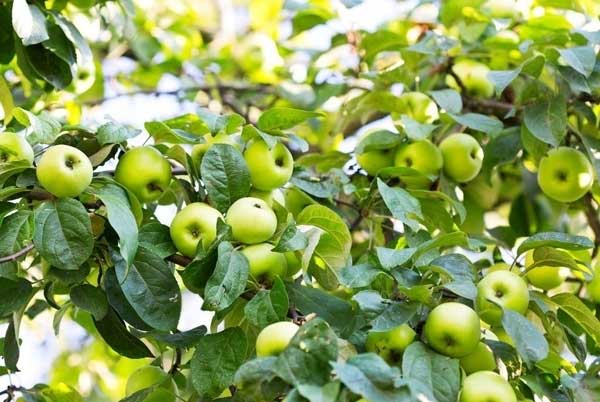
Stir together one part sand and one part peat and fill a flowerpot with this mixture. Another growing medium mixture is one part peat, one part perlite and two parts sand.
Remove buds and leaves from the lower half of the cutting from the apple tree. Pour some rooting hormone into a saucer and dip the cut end in rooting hormone.
Stick the cutting into the growing medium in the flowerpot about halfway and press the medium firmly around the cutting so it stands upright on its own.
Moisten the cutting and growing medium with water from a spray bottle. Cut the bottom from a clean, clear, 2-liter plastic soda bottle. Screw on the cap and set the bottle over the cutting in the flowerpot, creating a mini-greenhouse. Alternatively, set the entire pot inside a clear plastic bag and seal it closed with something such as a twist tie. It is important to keep the bottle or bag from touching the cutting. You can use soil to make sure they don't touch.
Place the flowerpot in a warm location out of direct sunlight. Remove the cover and mist again, if needed, to keep the cutting evenly moist throughout the rooting phase. Roots should emerge and leaves will appear on the cutting after a few weeks.
Transplant the established cutting to its permanent location in late winter or early spring, keeping the root ball intact.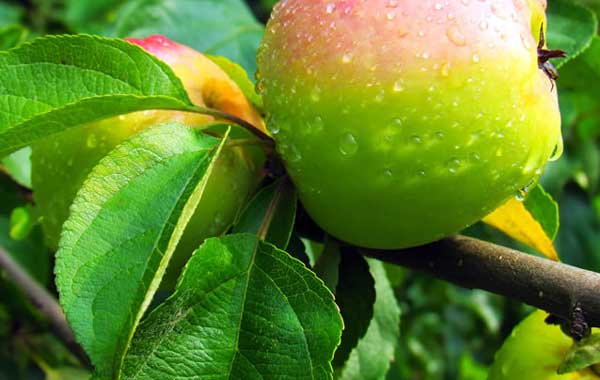
Common apple tree diseases include anthracnose, which is a fungus you can control with a copper fungicide or neem oil. Fire blight is a highly contagious disease that causes the fruit and leaves to look like they’ve been scorched. There are sprays specifically for fire blight use. You can also keep the tree site clean and free of debris as a preventative measure.
Small animals, such as mice, can nibble on your tree’s trunk in the winter months. Tree guards or a layer of burlap wrapped around the trunk will help prevent this. Deer may be attracted to the fruit. Although there are deer sprays that may inhibit deer, the only sure way to keep them away is to fence in your trees.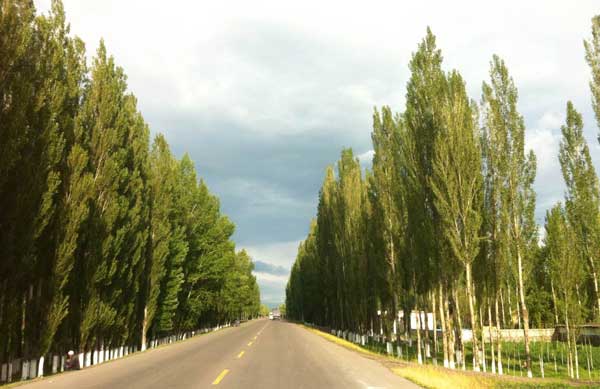
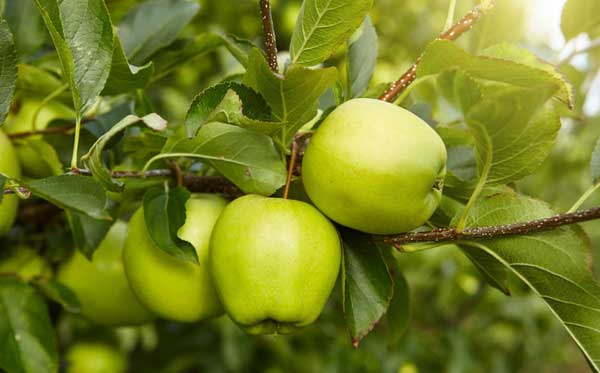
Where to Grow Lodi Apple TreeHow to Grow Lodi Apple TreeLodi Apple Tree Propagation with SeedsLodi Apple Tree Propagation with Stem CuttingsHow to Care for Lodi Apple TreeLightSoilWaterTemperature and HumidityFertilizerPruningPests and DiseasesVarieties of Lodi Apple TreeLodi ApplesGravensteinHoneycrispNorthern SpyRed RomeGala DwarfLodi Apple Tree FAQWhat Does Lodi Apple Taste Like?Are there other apple trees the Lodi tree can be cross-pollinated with?What time of year is best for picking apples off the Lodi tree?How do I keep birds from eating the apples before they are ripe enough to pick?
Where to Grow Lodi Apple Tree
The Lodi Apple Tree can grow in planting zones 3 – 8, which means the tree can be grown in most of the United States. Full sun is preferable, but if you have to choose between morning and afternoon sun exposure, go for the early hours. Morning sun will help to deter mildew diseaseApple trees need rich, well-drained soil. Adding compost to your soil will help promote growth and fruit production. you must be sure that your tree will be allowed good drainage and avoid planting it in a low spot. If the tree's roots sit in water, the tree will die. If you are planting your tree in an existing lawn, it is recommended that you remove the grass in a four-foot diameter prior to planting. Do not add fertilizer before planting your trees, however, as it can actually harm the tender young roots.

How to Grow Lodi Apple Tree
Lodi Apple Tree Propagation with Seeds
Make sure your seeds are dry. If they are store-bought, they should be. If not, dry them out on a paper towel. Wrap the seeds in damp paper towels and then put them in a sealed bag or container. You now need to refrigerate your seeds for 75 days, keeping them around 45 degrees Fahrenheit. You will need to re-spray the seeds every now and then to make sure they stay damp.By the end of the 75 days, your seeds should be beginning to sprout. In 4-inch deep pots spread a soil mix. Then, make divots in the soil that are 1-2 times the size of the seeds. Add the seeds to the soil and gently cover them. Water until the soil is moist.
Place the pots somewhere where they will get sunlight. Water them frequently, keeping the soil moist. When the plants outgrow their pots you can either move them to bigger pots, and wait for them to outgrow those, or plant them in your desired apple tree spots.
Take the seedlings out of their pots and plant them in your desired apple tree locations. The planting spots should have lots of sunlight and be on high ground because low-lying frost can kill apple tree blossoms. If you are planting two trees they should be at least 15 feet apart.
Your trees will continue to grow, and in a few years, will even produce fruit.

Lodi Apple Tree Propagation with Stem Cuttings
Cut an end-section with sharp pruning shears from a branch on the upper part of a healthy, mature, dormant apple tree in winter or early spring before any signs of growth appear on the stems. The cutting should be several inches long.Stir together one part sand and one part peat and fill a flowerpot with this mixture. Another growing medium mixture is one part peat, one part perlite and two parts sand.
Remove buds and leaves from the lower half of the cutting from the apple tree. Pour some rooting hormone into a saucer and dip the cut end in rooting hormone.
Stick the cutting into the growing medium in the flowerpot about halfway and press the medium firmly around the cutting so it stands upright on its own.
Moisten the cutting and growing medium with water from a spray bottle. Cut the bottom from a clean, clear, 2-liter plastic soda bottle. Screw on the cap and set the bottle over the cutting in the flowerpot, creating a mini-greenhouse. Alternatively, set the entire pot inside a clear plastic bag and seal it closed with something such as a twist tie. It is important to keep the bottle or bag from touching the cutting. You can use soil to make sure they don't touch.
Place the flowerpot in a warm location out of direct sunlight. Remove the cover and mist again, if needed, to keep the cutting evenly moist throughout the rooting phase. Roots should emerge and leaves will appear on the cutting after a few weeks.
Transplant the established cutting to its permanent location in late winter or early spring, keeping the root ball intact.

How to Care for Lodi Apple Tree
Light
A Lodi Apple Tree needs plenty of sunlight to grow to maturity and produce plenty of apples for you and your family to enjoy year after year. Your lodi apple Tree will grow best in a location with full sun, or at least 6 hours of sunlight a day.Soil
When planting lodi apples, be sure to use loamy soil with good drainage. As with most apple trees, the soil pH should be between 6 and 7.Water
You need to water your lodi apple tree regularly while it is establishing strong, healthy roots. Water it 2-3 gallons every two or three weeks for the first few months, then water only once a week during the growing season. In fall and winter, you only need to water once per month.Temperature and Humidity
The Lodi Apple Tree is considered to be cold-hardy, but it will always bear fruit in the summer (typically July).Fertilizer
Fertilize your Lodi Apple Tree in early spring with a slow-release fertilizer with a balanced NPK value of 10-10-10. Your apple tree should grow roughly one foot per year until it reaches three years old. If it is growing more slowly than that, increase the amount of fertilizer by 50% in the second and third years.Pruning
You'll want to prune most apple trees either late in the winter or early in the spring, so that cuts won't be left unprotected against the coldest winter temperatures. Pruning is important for apple trees because it helps create a basic structure for the tree as well as a sturdy scaffold to support the weight of the heavy fruits. Generally speaking, pruned apple trees also tend to generate a higher yield of fruit.Pests and Diseases
Pests that may bother your apple tree include aphids, apple maggots, bud moths, and codling moths. Orchard sprays, horticultural oil, or neem oil may help with each of these. Your local cooperative extension agent can also give you guidelines on dealing with the prevalent pests or diseases in your region.Common apple tree diseases include anthracnose, which is a fungus you can control with a copper fungicide or neem oil. Fire blight is a highly contagious disease that causes the fruit and leaves to look like they’ve been scorched. There are sprays specifically for fire blight use. You can also keep the tree site clean and free of debris as a preventative measure.
Small animals, such as mice, can nibble on your tree’s trunk in the winter months. Tree guards or a layer of burlap wrapped around the trunk will help prevent this. Deer may be attracted to the fruit. Although there are deer sprays that may inhibit deer, the only sure way to keep them away is to fence in your trees.

Varieties of Lodi Apple Tree
Lodi Apples
These Lodi Apple Trees produce fruit earlier in the season. They grow to be anywhere from 10-25 feet tall. Lodi Apple Tree s are more durable than other apple trees and can handle numerous kinds of soils.Gravenstein
Gravenstein apples can prosper in numerous zones across the country. This tree is notable for being one of the earliest apple trees to bloom, taking less time to produce fruit. The apples this tree produces are great for cooking. The tree can grow to be 15- 20 feet tall.Honeycrisp
These delicious apples can grow in numerous climates. This tree is fairly manageable for a backyard, only growing to be about 15 feet tall. Honeycrisps are regularly recognized for being one of the best apples you can buy. The US Apple Association declared them one of the top five most grown apples in America.Northern Spy
This hardy apple can withstand the cold more than most others. It even keeps its leaves far into the winter, past the first frost. It does, however, require frequent work and pruning which can be challenging since it grows to be about 25 feet tall.Red Rome
This is one of the fastest-growing apple trees. It can be droopy, and its fruit can be hard, so it is better to eat Red Rome apples cooked instead of raw. This tree is a semi-dwarf apple tree, only growing to be about 10-14 feet tall.Gala Dwarf
This dwarf tree grows to only be about 8-12 feet tall. You probably have tried Gala apples, they are extremely common in grocery stores, but fresh-grown ones are much sweeter in flavor. These trees are conveniently self-pollinating, so they do not need a companion tree, although a companion tree will help with their fruit quality. This is important because they have poor disease and pest resistance abilities.
Lodi Apple Tree FAQ
What Does Lodi Apple Taste Like?
The lodi apple has a sweet, but tart taste to it. These apples will be preferred by those who like just a little sweetness.Are there other apple trees the Lodi tree can be cross-pollinated with?
There are many apple trees that the Lodi tree can be cross-pollinated with. Other common ones, besides Jonathon, are Liberty, Braeburn (BraeStar), and McIntosh.What time of year is best for picking apples off the Lodi tree?
The tree is ready to be picked in July in most locations that it is grown in.How do I keep birds from eating the apples before they are ripe enough to pick?
Place netting over your tree to keep the birds away from the fruit until they are ready to be picked.Latest Updated
- Benefits of Bugleweed - 7 Science-backed Health Benefits
- Bugleweed Dangers & Side Effects - Is It Poisonous?
- How to Plant Evergreen Trees - What You Should Know
- When to Plant Evergreens - Grow Guide for Evergreen Trees
- 12 Wonderful Evergreen Shrubs for Your Garden
- 12 Popular Evergreen Plants with Pictures for Beginners
- When And How To Prune A Lilac Bush Like a Pro
- How to Grow & Care for Lilac Vine (Hardenbergia Violacea)
- Japanese Lilac Tree (Syringa Reticulata) Care & Propagation Guide
- Shumard Oak Pros and Cons - What to Know
Popular Articles
- Winter maintenance of Antirrhinum Majus
- How to Grow Terminalia Mantaly Tree
- How to Grow and Care for Crossostephium Chinense
- How to grow Antirrhinum Majus in spring
- Peristeria Elata (Dove Orchid) Profile: Info & Care Guide
- Underwatered Snake Plant (Sansevieria Trifasciata) - Signs And How To Fix
- How to Care for Brazilian Jasmine Plant (Mandevilla Sanderi)
- How to Grow & Care for Graptopetalum Purple Delight in Summer
- Rosa Chinensis (China Rose): Plant Growing & Care Tips
- How to Care for Baby Sun Rose (Aptenia Cordifolia)